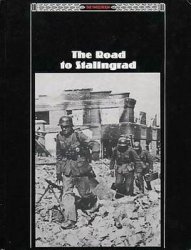As mentioned above, the Akhmim corpus consists of records taken from images on tomb walls, stelae and various funerary items, in particular, painted wooden coffins. 1n no sense as large as the formidable number of hieroglyphs written in the el-Hawawish tombs, the Akhmim sarcophagi inscriptions stretch chronologically from the latter part of
The fifth dynasty, well into the First Intermediate Period.81 Although they are painted on wood, these signs show comparability with the hieroglyphs in the tombs, where some of the signs were painted, but others were carved and painted. Unfortunately, not all these signs written on stone are in a sound condition today, so some of the records preserve incomplete outlines or display an occasional law (but no attempt has been made to correct such signs for a better presentation in the current work). On the other hand, signs ranging from the sixth dynasty up to the ninth recorded on the Akhmim stelae are generally well preserved. Edward Brovarski82 has sorted these stelae into three artistic categories that end in the Herakleopolitan period and these hieroglyphs not only show some conformity with the artistic work of the tombs, but also work from other provinces during the same period of time.83 he third major group within the Akhmim corpus consists of painted wooden items, mostly coffins. chronologically, the majority of the painted coffins overlaps the dates of the stelae and continues into the eleventh dynasty.84 hus, although a huge amount has been lost or destroyed, there is the possibility of mapping the progress of the hieroglyphic transmission from the late fifth dynasty down to the onset of the Middle Kingdom for yet one more85 area of Upper egypt.
As is true for other regions of Egypt, these hieroglyphic records of the Akhmim artists contain examples of actual hieratic signs, very summary examples of hieroglyphs (both painted and carved) through the standard hieroglyphic range to extremely competent and even artistic signs. One notes, however, that the hieroglyphs painted on the Akhmim coffins are an even more diverse and interesting collection of hieroglyphs than either the stelae or the tombs display, and they contain many variants of standard signs. his situation may be due to the fact that the media used for coffin painting have a more malleable and more intimate nature than the media afforded by the tomb wall inscriptions. Signs carved — or even those that are painted — on walls necessitate a distance between the artist and his86 surface; this distance is more marked in the case of artisans with a hammer and chisel cutting into the wall, where the distance from the artist’s eye to his hand is not only greater, but also much more difficult physically. Even though an artist with just a brush has more control in a tomb environment, he must still work on a surface which is vertical and immovable. such a distance is reduced for coffin painters, who have a more intimate atmosphere for their work, can exercise a greater control over a brush than a mason can have with his chisel, and can circle around the object that he is painting to get better access and control.




 World History
World History









